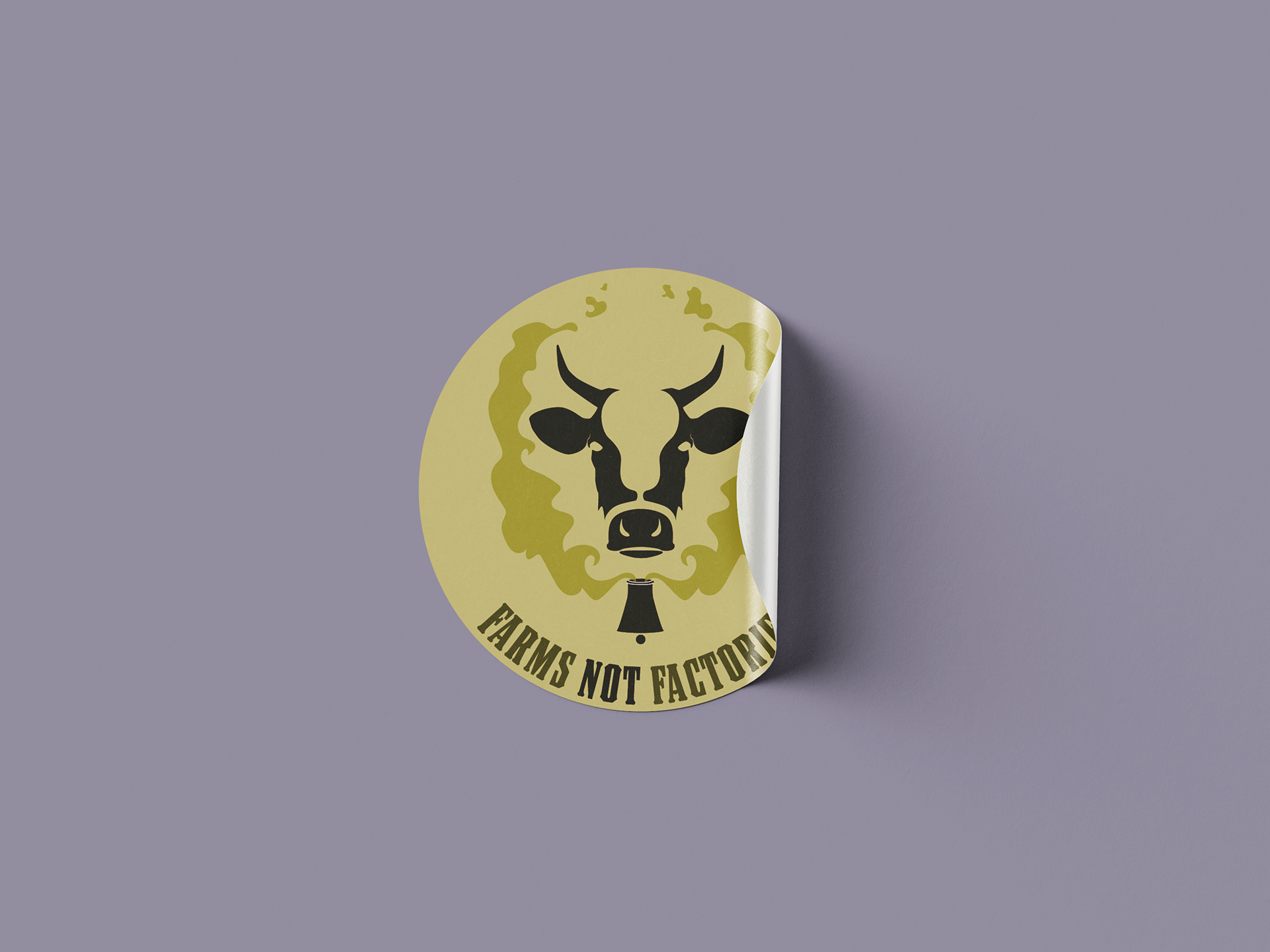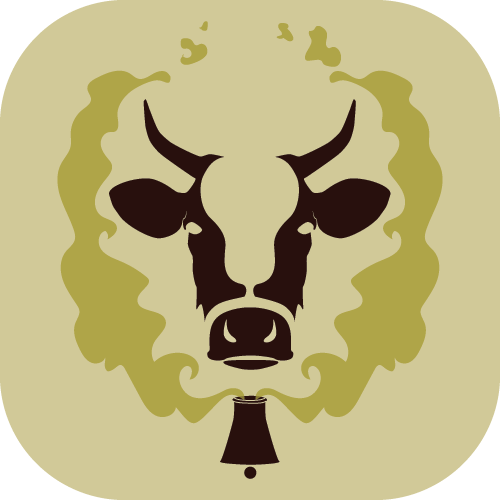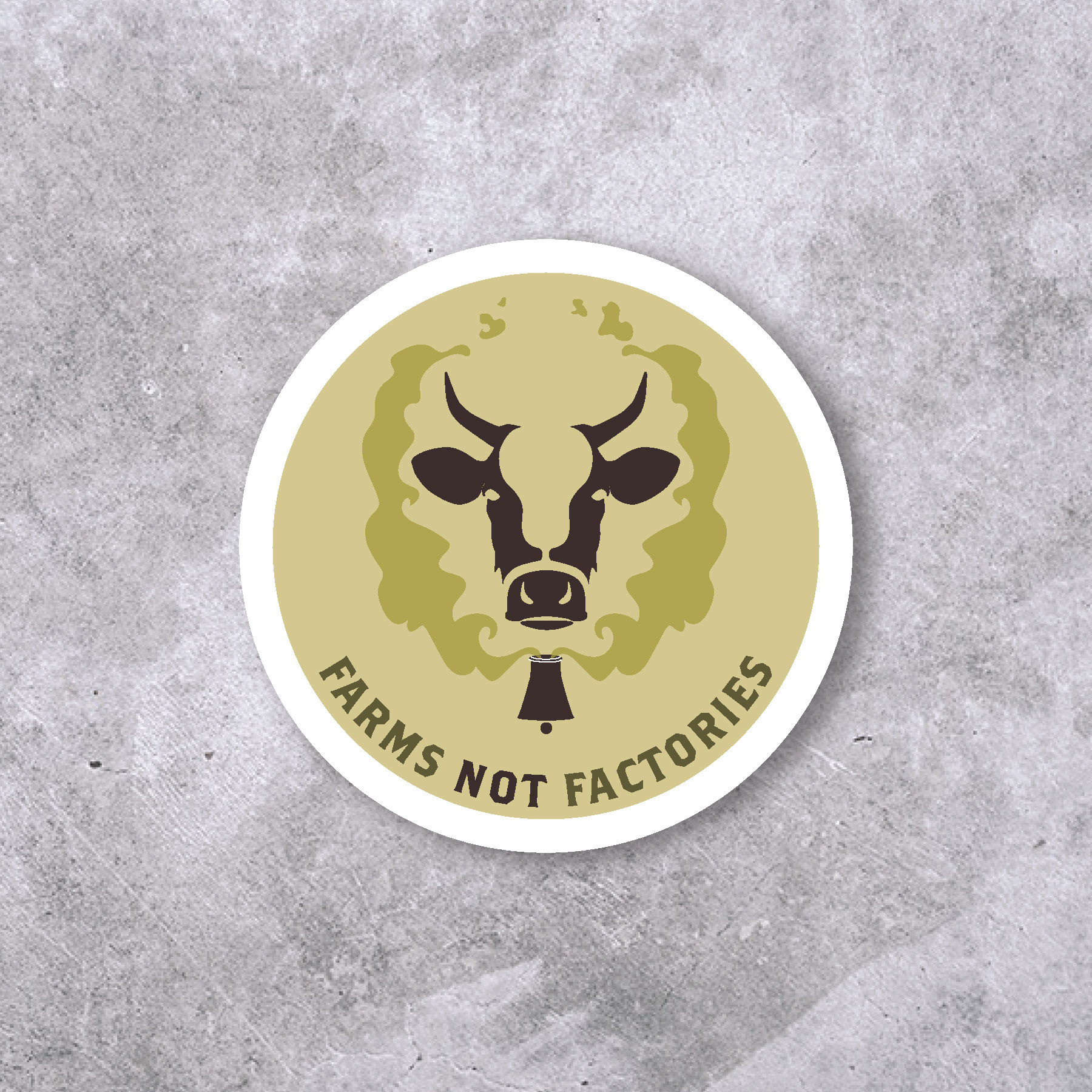
Farms Not Factories Sticker

Farms Not Factories "No Beef" App Icon
In this campaign, I wanted to highlight the devastating pollution of factory farming cows. By implementing the principle of closure in the figure-ground relationship, I was able to offset the figure of a cow's face with the ominous lingering shape of a steak, thus forcing the viewer to see the cow as an animal before they see it as food. I also chose to envelop the cow with nauseous green smoke emanating from a cowbell smokestack, further pushing the pollution aspect of my message. The multidimensionality of the icons allowed the piece to translate well into a poster, a sticker, and an app, all of which were required for this project. In the final piece, I hoped to achieve an imposing illustration that brought awareness to the massive environmental impact of industrial beef production.
Research
Industrial beef production is a significant contributor to climate change. The livestock industry alone produces 18% of the world’s greenhouse gas emissions. Cows produce more methane than any other meat-based industry, even as much as 4-8 times as much as pork or chicken. Methane breaks down the ozone layer in the earth’s atmosphere and harms air quality. Additionally, beef requires 28 times more land and 11 times more water than chicken or pork does. The residue from the mass of beef produced also leads to significant groundwater pollution due to excess manure which is unable to be maintained due to the huge production rate of beef.
Promoting and supporting smaller beef productions and farmers will not only eliminate some emissions but also help prevent groundwater pollution due to the contained sizes of herds. Additionally, by choosing to eat less beef overall, and opting for less environmentally harmful chicken, pork, or vegetarian options will further reduce the carbon footprint. Our planet is already at a place where the environment may never be able to be sustainable again, let alone recover. It is time that we take whatever steps we can to make a change, big or small.
Digital Process
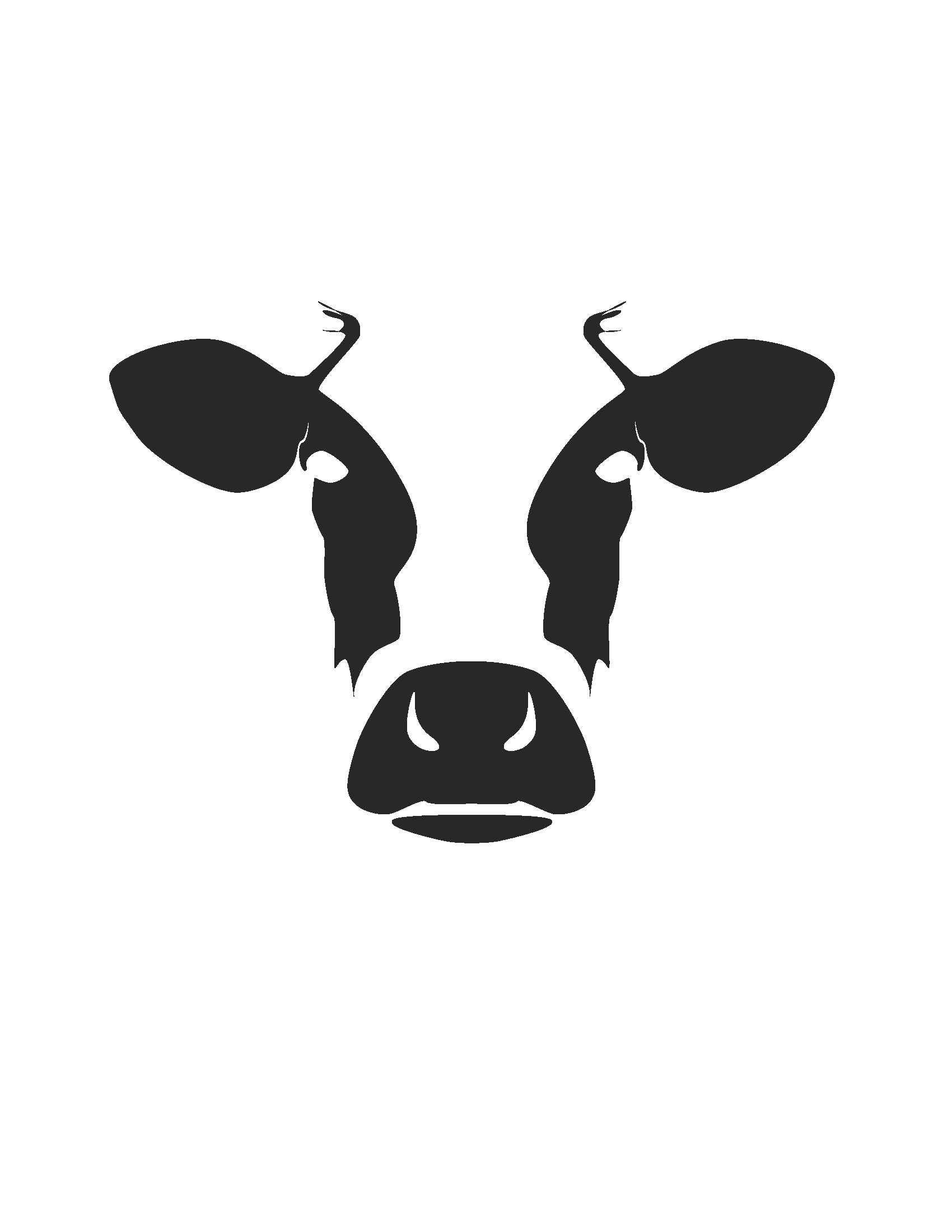

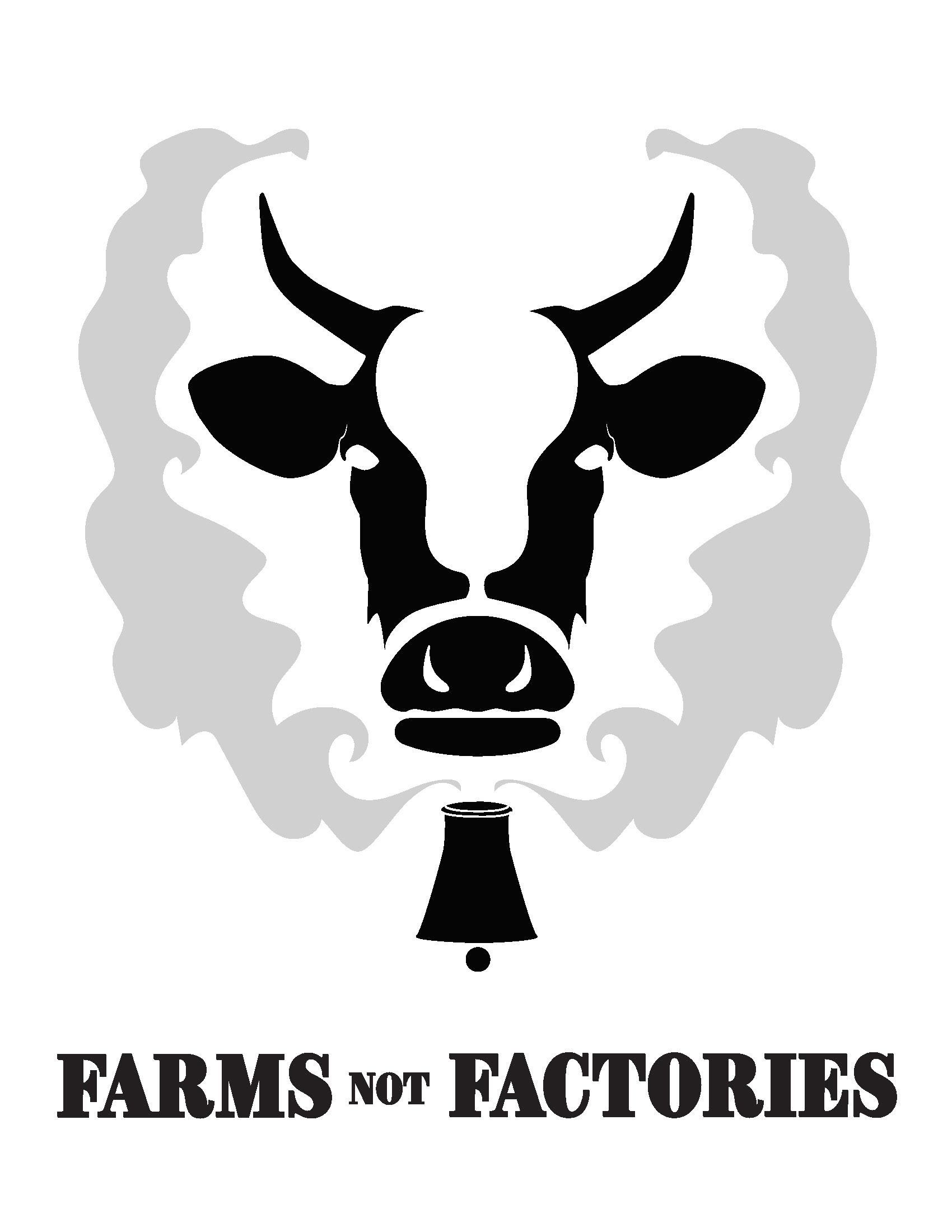
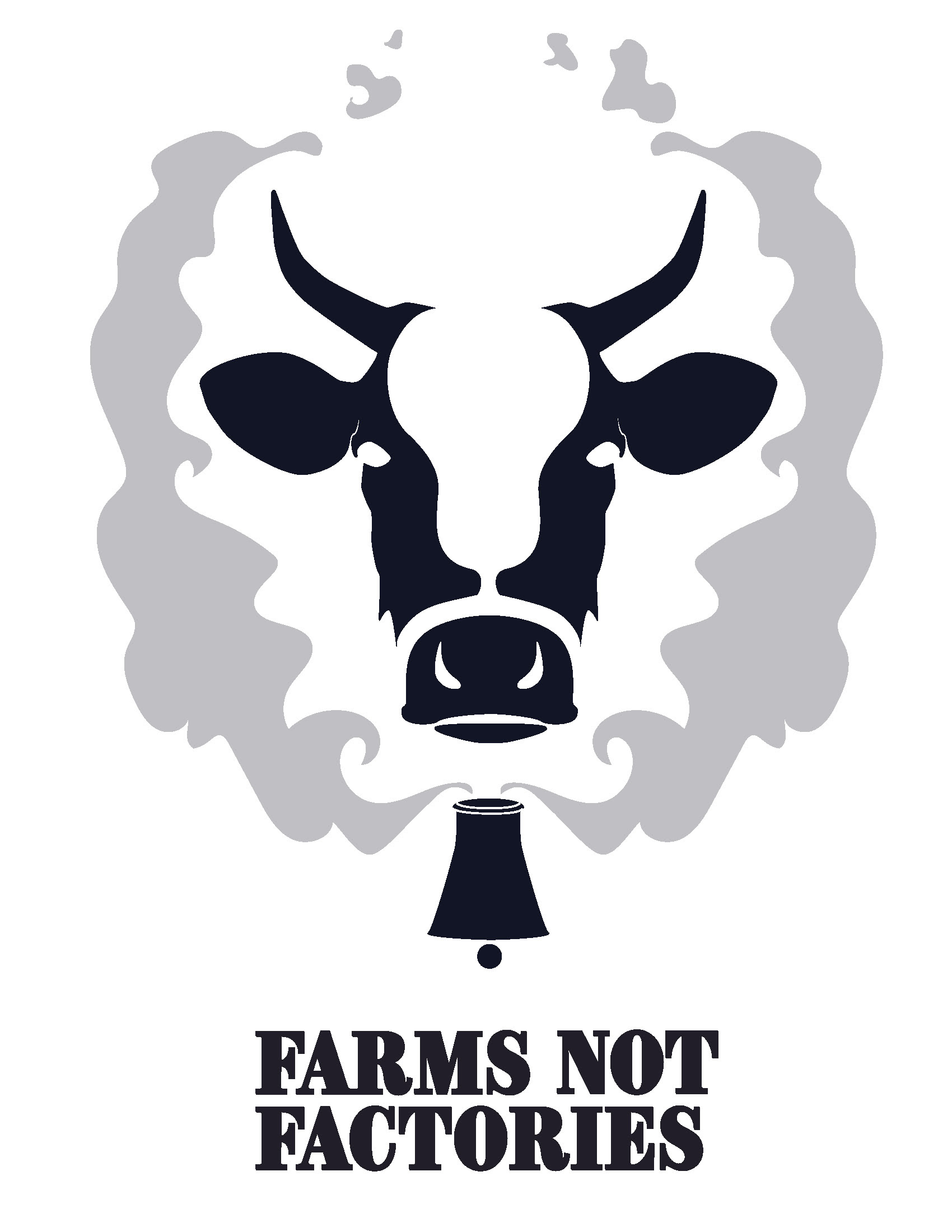
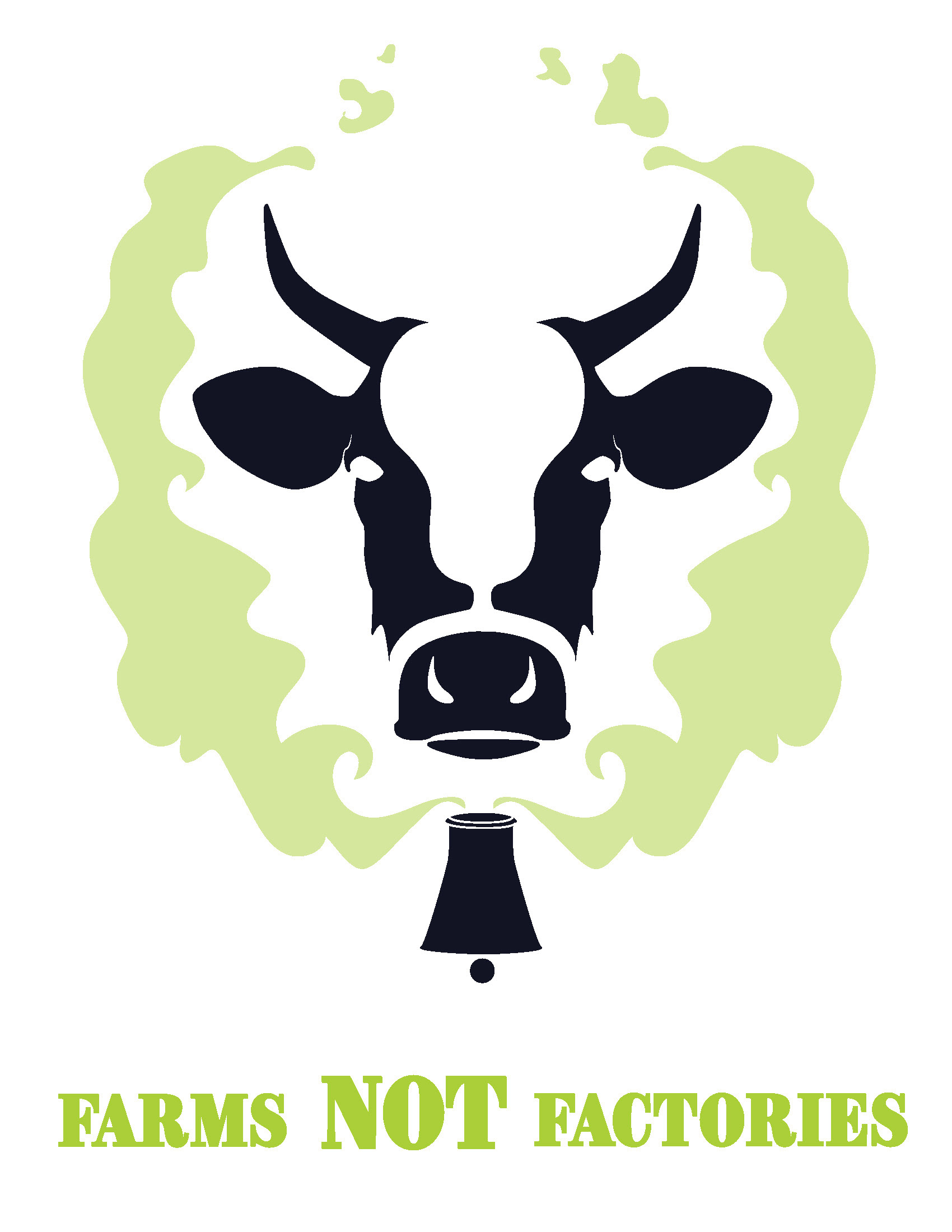
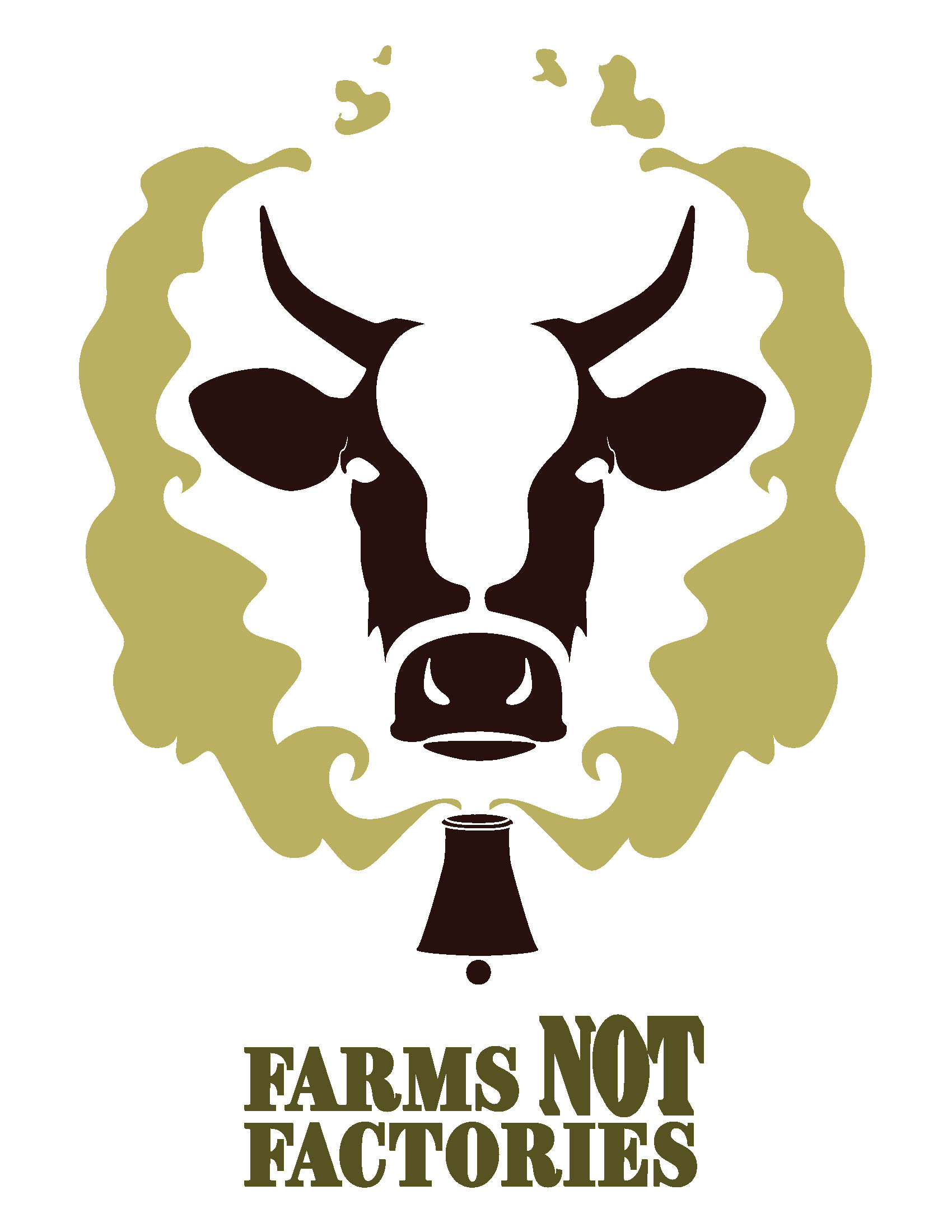
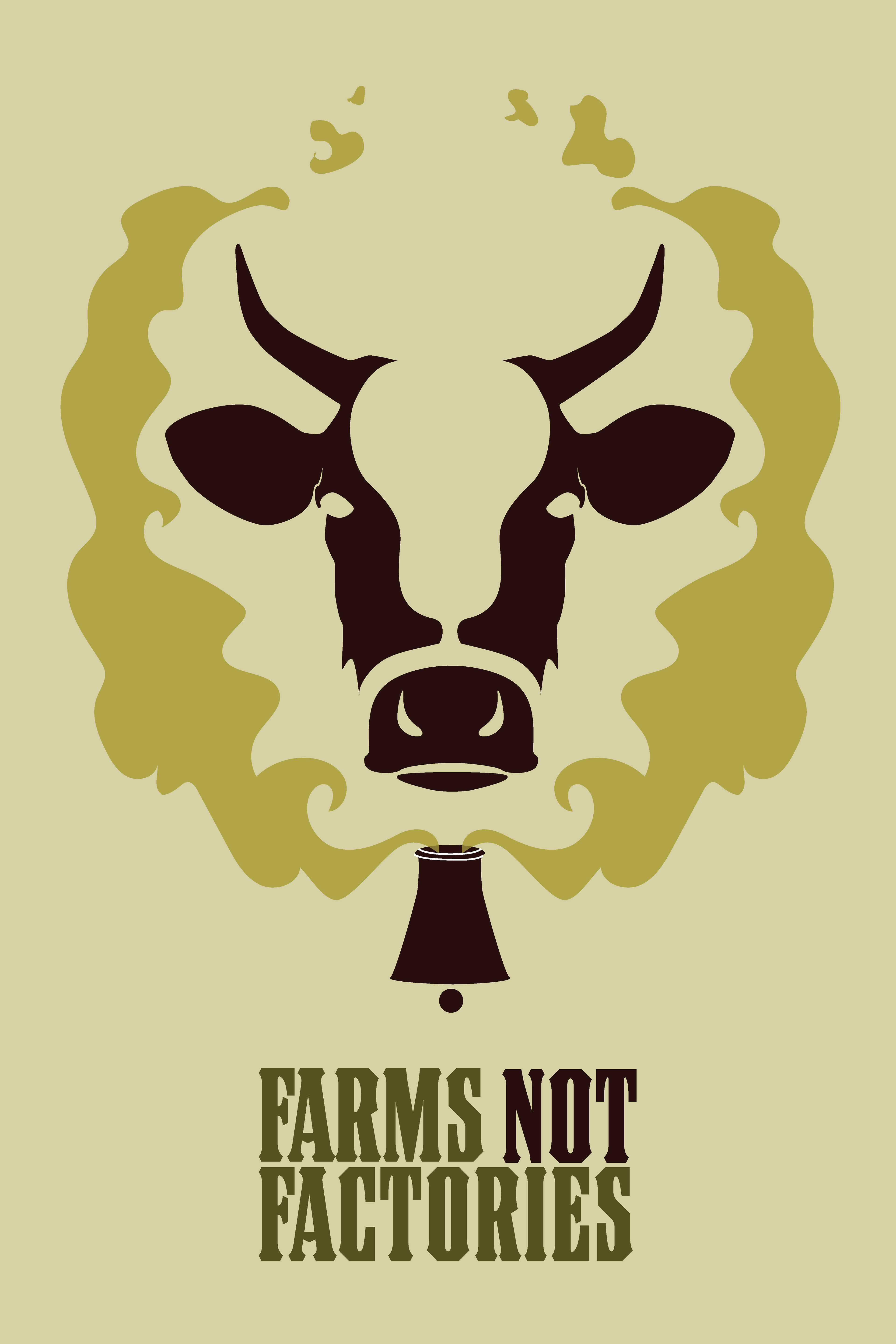
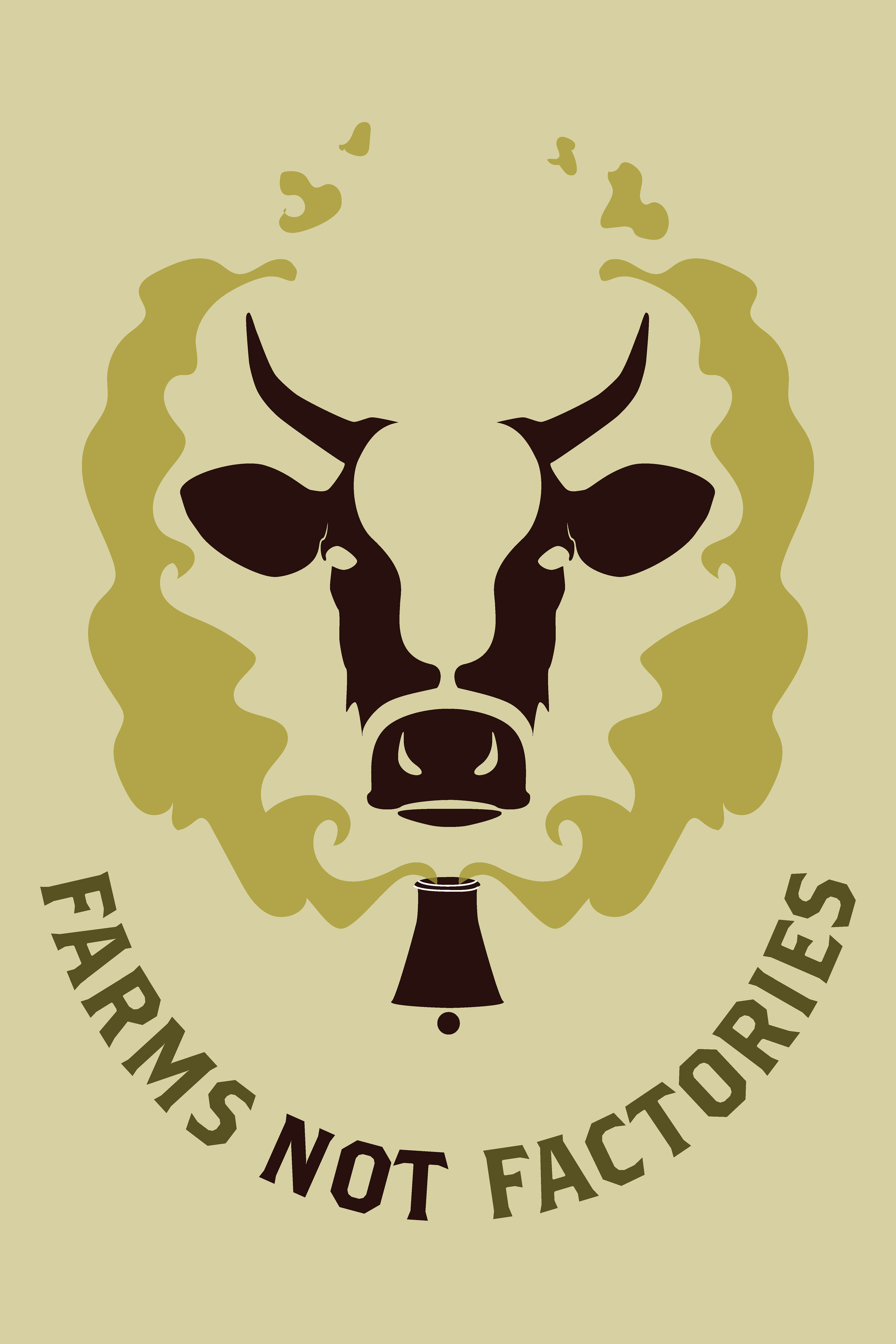
The final design had to be versatile and clear enough to be read at both a giant poster size and a minute size of an app icon. This presented an interesting challenge of making the illustration interesting and detailed enough to be powerful at a large size, but also be fully readable at the app size.
Systems
Fairplex Wide OT
ABCDEFGHIJKLMNOPQRSTUVWXYZ
abcdefghijklmnopqrstuvwxyz
The colors I chose reflected the imbalance of the natural elements and the toxins being released. The green verges on septic, especially when used in the form of a halo of smoke. The manure brown contrasted the vibrancy of the green, and brought in a deep red-ish tone, pushing the complementary colors apart and giving the piece a full value range.
Final Flat Files
